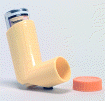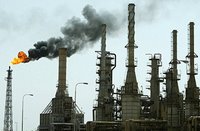 The new book, "Poverty, Health, and Ecosystems: Experience from Asia," highlights the challenges faced by these poor and often resource dependent households across Asia in 16 case studies. The majority of Asia's poor live in rural areas where ecosystems they depend on - water bodies, grasslands, soils and forests - are facing strains from unsustainable exploitation, according to a new publication launched by ADB and the World Conservation Union. Roughly one billion Asians still live in severe povery and suffer disproportionately from the health risks caused by inadequate or dirty water and polluted air. The poor bear the burden of collecting the resources for their daily use, such as water and fuelwood.
The new book, "Poverty, Health, and Ecosystems: Experience from Asia," highlights the challenges faced by these poor and often resource dependent households across Asia in 16 case studies. The majority of Asia's poor live in rural areas where ecosystems they depend on - water bodies, grasslands, soils and forests - are facing strains from unsustainable exploitation, according to a new publication launched by ADB and the World Conservation Union. Roughly one billion Asians still live in severe povery and suffer disproportionately from the health risks caused by inadequate or dirty water and polluted air. The poor bear the burden of collecting the resources for their daily use, such as water and fuelwood.The case studies include analyses of pressures facing agricultural systems in People's Republic of China (PRC), India, and Pakistan. They also cover examples of links between households or communities and freshwater or marine aquatic ecosystems in Bangladesh, PRC, India, Lao People's Democratic Republic, and Sri Lanka. A case from Mongolia examines the relationships between grassland ecosystems as a source of pastures for livestock, while cases from Nepal and the PRC document how the poor rely on forests for fodder, medicines, fuel wood, and other products. One study looks regionally at the complex linkages between gender, poverty, and environment, while other cases from the highlands of Viet Nam, tribal groups in Orissa, India, and in Yunnan Province of the PRC illustrate how ethnic minorities are not only among the most poor and marginalized but also among the most natural resource dependent. Hat Tip: ">Ron Taylor














